Please note that I do not consider the images in this post to be sexual. These images document the medical procedures I have gone through to save my life and I feel they are important to share in order to raise awareness and spread understanding. If you are uncomfortable viewing these kind of images, you can view the PG version of this post here.

The silver lining of cancer that everyone wants to talk about it the ‘breast cancer boob job’. Well unfortunately, I have news for you, that silver lining is something of a myth. The reality is, the breast reconstruction process is a far cry from the Hollywood boob job. I have nothing against women who elect to have breast augmentations and have many friends who went that route, but for comparison sake let’s throw the misconception of this comparison out the window.
If you follow me on social media, you may have seen me complaining about weekly events called ‘fills’, the pain of my expansions and the struggle of my mid-reconstruction body. So what does all that mean? Settle in for your first lesson of Breast Reconstruction 101.
Let’s start with the basics…to be clear, what follows is an over-simplified explanation for comparison sake. When someone (without cancer) goes into a surgeon’s office and elects to have breast augmentation, the implants are added to the original breast. The surgery is usually done as an outpatient procedure and the person wakes up with larger breasts and minimal recovery time.
For us post-mastectomy women, who have no breast tissue to augment and thus we are left with few options – transfer fat from other parts of the body or implants (silicone, saline or gel). For a more detailed comparison of all the reconstructive options, check out this super helpful chart from breastcancer.org. While I would have loved to go under and wake up with implants (immediate reconstruction), that option was not in the cards for me due to a variety of medical factors. So, I began my trek down the road of delayed reconstruction with implants & expanders. I can tell you from experience this route it has been less than pleasant.

The process began in my reconstructive surgeon’s office 2 months before I finished chemo. Reconstructive surgeons, which I will refer to as RS from now on, are plastic surgeons that specialize in reconstructive surgery. At the time it was a pleasant distraction from the chemo and something ‘fun’ to look forward to. We spent the appointment playing with implants, talking through the options and taking a ‘before’ picture of my lonely left boob. We then coordinated a date 4-6 weeks after chemo ended when both my oncology surgeon and RS were available to work together for the surgery. I planned to go under the knife again for my left breast preventative mastectomy and the reconstruction would begin at the same time. After my oncology surgeon finished the left breast mastectomy he passed the torch to my RS. After expertly cutting my pectoral muscles, she inserted the expanders (similar to a deflated balloons) behind the muscles, reattached the muscles and sewed me back up. This of course is my expert scientific summary. Just kidding, I am a far cry from a doctor. The image above will help provide a sense of the anatomy and placement.
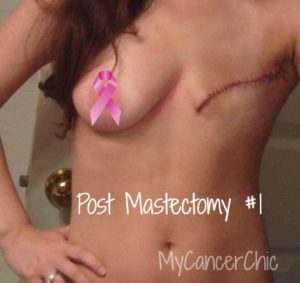
When the expanders are placed during the initial surgery they are usually filled with a small amount of saline (30-100cc). The amount of skin you have available post-surgery is one factor which determines how much saline you can have at the beginning. Due to complication during my surgery, I only had 60ccs of saline put in. The extra skin that would have been available was needed to re-stitch my incision after extreme swelling & fluid build up (600ccs of fluid/hematoma).
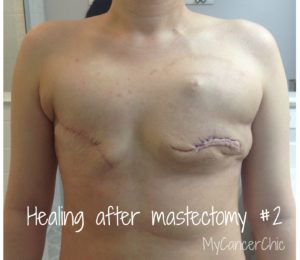
After I had recovered from the surgery and the swelling went down, I was able to begin the delightful expansion process. So how on earth do they continue to fill the tissue expander after you are stitched up? It’s magical! A little blue magnet is used to find the surgical steel port on the expander. The nurse then marks the spot and uses a butterfly needle to access the expander. Jumbo sized syringes (60ccs each) are then used to fill the expanders with saline. The most saline you can get per ‘fill’ is 120ccs per side, but I was never able to get close to that number. The most I have been able to do was 90ccs. The first 2 fills were a breeze. Imagine you are filling a hole with sand, the first few scoops will fill in the hole before a mound is formed. The same is true with your chest. As you’re back filling the space with saline, you won’t experience much pain as the skin and muscles are not yet being stretched. Once you hit the 3rd or 4th expansion, most people start to experience increased pain and discomfort. As the process continues, the expanders become harder and harder and push out again your skin and muscles with increased strength trying to escape. Image 4 years of puberty condensed into 2 months. Though your skin recovers quite quickly from week to week, the aching in your chest muscles continues without relief. Everytime you move, roll over or lean on your chest, you are met with the delightful reminder of the hard alien objects protruding from your chest.
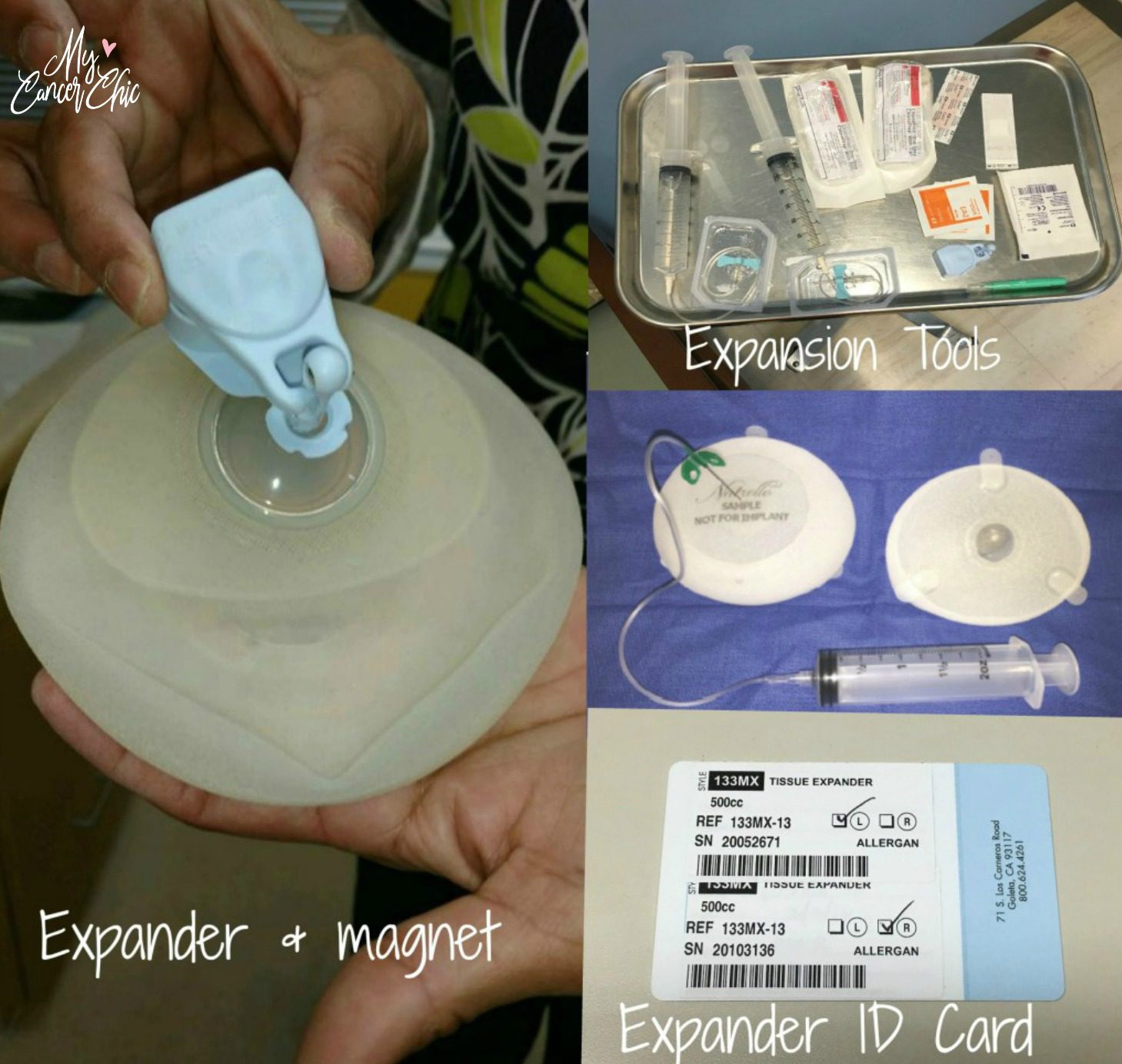
So how long do you have to go through this expansion process? Unfortunately, it’s different for each person. Most reconstructive surgeons estimate around 6 months. The largest implants are 800cc and doctors like to over fill the expanders to allow for extra skin, so the most fluid in an expander would be 860cc. As the process continues, the pain increases and many women experience complications, infections or other issues that delay the process. The expansion process continues until you reach the desired size, which is extremely hard to determine since the expanders appear as odd shaped blobs spreading up and out across your chest wall. Do not fear, though this may look extremely strange at the time, the placement and appearance of your final implants will be corrected by your surgeon to give a natural and even appearance. I hope to finish with the expansion process soon (maybe 2-3 more fills). Most surgeons will suggest women complete one more fill after reaching their desired size to allow for a little extra skin. You can always decide to get smaller implants after living with larger expanders, but you can’t change the other way around. Then comes the waiting… at least three months of waiting is required to ensure your chest muscles and skin fully adjust to the expanders and your body forms a cavity for the permanent implants.
After the required three months (or longer) wait period, there is what many call a ‘switch’ or ‘exchange’ surgery. This part of the process is the most similar to a cosmetic breast augmentation. The surgery is done as an outpatient procedure and the expanders are switched out for ‘permanent’ implants. The recovery from this surgery is minimal (or so I hear) compared to the mastectomy experience. After 3 months of healing many women will end up having a few additional surgeries: nipple reconstruction, fat grafting, or other minor cosmetic adjustments.
Right now I am in the thick of the expansion process, struggling through. A few weeks ago the pain hit me so bad after my fill that I had to stop driving and my husband had to come get me. I’ve been a little apprehensive after that experience, so I have skipped the last few weeks of expansions. Though I want to get the process over with, I can’t stand the pain and discomfort. I was back in the chair this week for another fill. This time we decided to go with 30cc. We’re looking for that perfect number that won’t cause me too much pain and will allow me to manage weekly fills. Based on how I feel this morning, I think this this that golden spot. I was exhausted and uncomfortable last night but today I managing the pain without pain pills.
To help you get a sense for the process and the appearance, I have included a few images and a video below.
Expansion Timeline
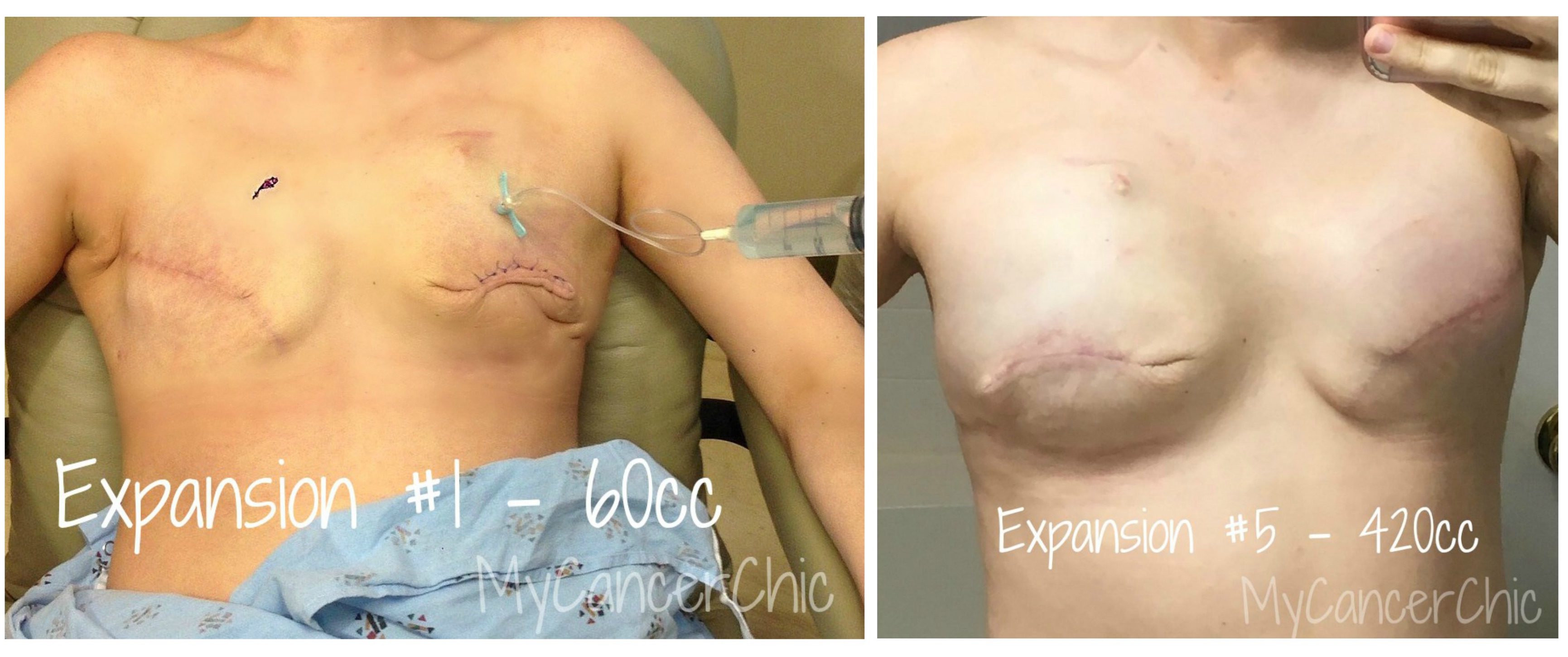
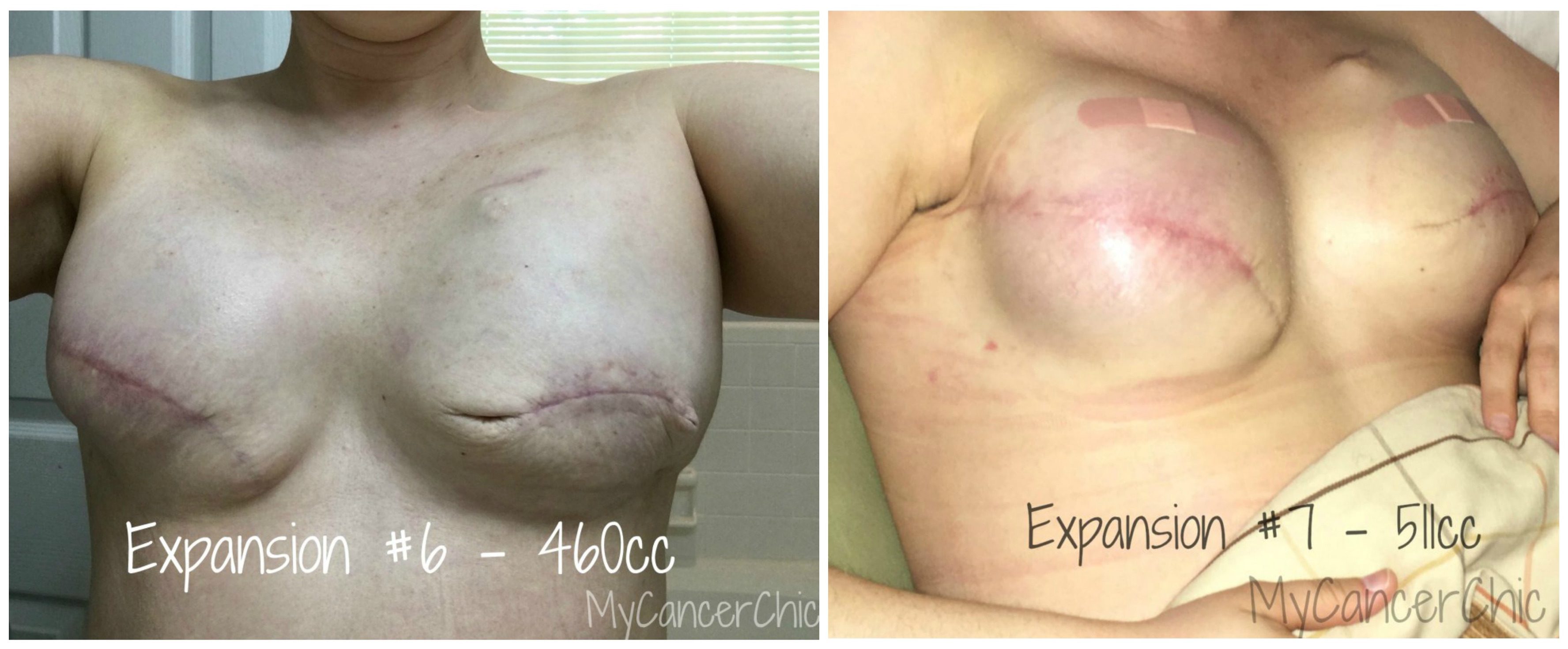
Expansion Video

23 Comments